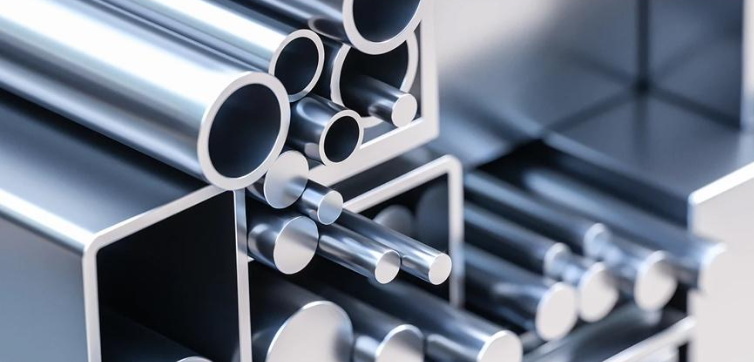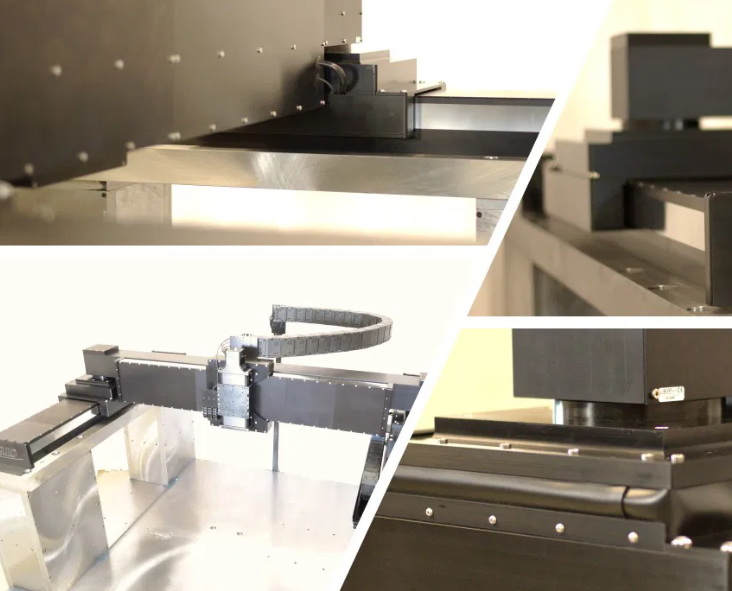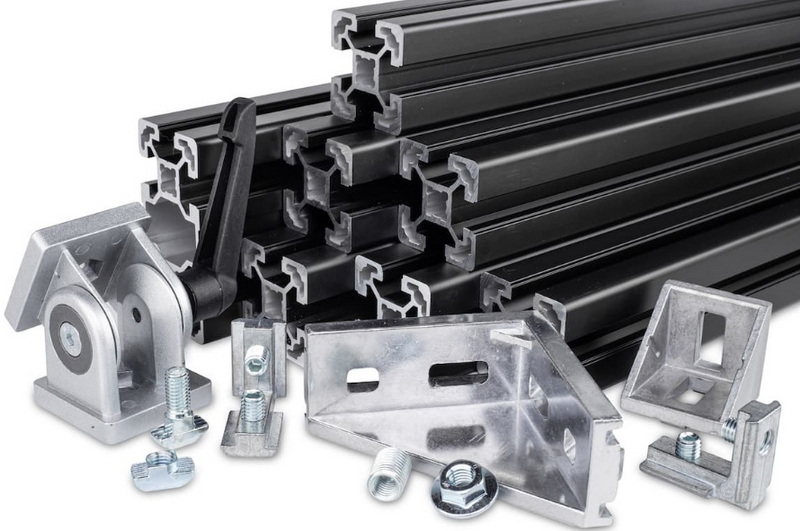Content Menu
● Understanding Aluminum Extrusion
● The Role of Aluminum Extrusion Inserts
● Benefits of Using Aluminum Extrusion Inserts
>> 1. Enhanced Structural Integrity
>> 2. Weight Reduction
>> 3. Improved Assembly Efficiency
>> 4. Corrosion Resistance
>> 5. Versatility in Design
● Applications of Aluminum Extrusion Inserts
● The Process of Integrating Aluminum Extrusion Inserts
● Case Studies Highlighting Effectiveness
>> Case Study 1: Aerospace Component Design
>> Case Study 2: Automotive Chassis Development
>> Case Study 3: Modular Furniture Systems
● Future Trends in Aluminum Extrusion Inserts
● Conclusion
● FAQ
>> 1. What are aluminum extrusion inserts?
>> 2. How do aluminum extrusion inserts improve structural integrity?
>> 3. In which industries are aluminum extrusion inserts commonly used?
>> 4. Can aluminum extrusion inserts be customized?
>> 5. What advantages do aluminum extrusion inserts offer over traditional joining methods?
● Citations:
Aluminum extrusion is a widely used manufacturing process that transforms aluminum alloys into custom-designed profiles. This method is not only efficient but also creates components that exhibit remarkable strength and versatility. One of the key innovations in this field is the use of aluminum extrusion inserts, which significantly enhance the structural integrity of various applications. This article explores how these inserts work, their benefits, and their applications across different industries.

Understanding Aluminum Extrusion
Aluminum extrusion involves pushing heated aluminum billets through a die to create specific shapes. This process allows for complex cross-sectional profiles that can be tailored to meet specific design requirements. The resulting extruded aluminum products are lightweight, corrosion-resistant, and highly durable, making them ideal for various applications, from construction to aerospace.
The extrusion process can be divided into several stages:
1. Heating: Aluminum billets are heated to a temperature that makes them malleable.
2. Extrusion: The heated aluminum is forced through a die, forming the desired shape.
3. Cooling: The extruded profile is cooled, solidifying its shape.
4. Cutting: The long extruded sections are cut to the required lengths.
5. Finishing: Additional processes such as anodizing or painting may be applied to enhance appearance and corrosion resistance.
The Role of Aluminum Extrusion Inserts
Aluminum extrusion inserts are additional components that can be integrated into extruded profiles to enhance their performance. These inserts can be made from various materials, including aluminum itself or other metals, depending on the application requirements. They serve several critical functions:
- Reinforcement: Inserts can provide additional strength where needed, allowing designers to create lighter structures without compromising durability.
- Connection Points: They facilitate connections between different components, ensuring stability and reliability in assembled structures.
- Load Distribution: Inserts help distribute loads more evenly across the structure, reducing stress concentrations that could lead to failure.
Benefits of Using Aluminum Extrusion Inserts
The incorporation of aluminum extrusion inserts into designs offers numerous advantages:
1. Enhanced Structural Integrity
By reinforcing key areas within an extruded profile, aluminum extrusion inserts improve the overall strength and stability of the structure. This enhancement is particularly beneficial in applications subjected to dynamic loads or vibrations.
2. Weight Reduction
Aluminum is already a lightweight material; however, by strategically placing inserts, manufacturers can reduce the amount of material needed while maintaining strength. This reduction is crucial in industries like aerospace and automotive, where every ounce counts.
3. Improved Assembly Efficiency
Inserts can simplify assembly processes by providing pre-defined connection points. This feature allows for quicker assembly times and reduces labor costs associated with complex joinery techniques.
4. Corrosion Resistance
Aluminum naturally forms a protective oxide layer when exposed to air, making it highly resistant to corrosion. When combined with inserts made from similar materials, the overall corrosion resistance of the assembly is enhanced.
5. Versatility in Design
The ability to customize inserts allows designers to tailor solutions for specific applications. Whether reinforcing a frame or creating a mounting point for additional components, the versatility of aluminum extrusion inserts opens up new possibilities in design.

Applications of Aluminum Extrusion Inserts
Aluminum extrusion inserts find applications across various industries due to their ability to enhance structural integrity:
- Construction: In building frameworks, inserts are used to reinforce joints and connections, ensuring long-lasting structures that can withstand environmental stresses.
- Automotive: The automotive industry utilizes aluminum extrusion inserts in chassis and body components to reduce weight while maintaining safety standards.
- Aerospace: In aerospace applications, where weight reduction is critical, aluminum extrusion inserts provide necessary reinforcement without adding significant weight.
- Industrial Equipment: Machinery often requires robust frames and supports; aluminum extrusion inserts help achieve this by enhancing load-bearing capabilities.
- Furniture Design: In modern furniture manufacturing, aluminum extrusion inserts are used for creating lightweight yet sturdy frames for tables and chairs, allowing for innovative designs without sacrificing strength.
- Electronics Enclosures: Many electronic devices use aluminum extrusions for their enclosures; incorporating inserts can provide additional support for internal components while maintaining a sleek exterior design.
The Process of Integrating Aluminum Extrusion Inserts
Integrating aluminum extrusion inserts into designs involves several steps:
1. Design Phase: Engineers assess the structural requirements and determine where inserts will be most beneficial.
2. Material Selection: Depending on the application, suitable materials for the inserts are chosen based on strength requirements and environmental conditions.
3. Manufacturing: During the extrusion process, the designed profiles are created with spaces or channels for the inserts.
4. Assembly: Once extruded profiles are produced, the inserts are installed at designated points using mechanical fasteners or adhesives.
5. Testing and Quality Control: Finished assemblies undergo rigorous testing to ensure they meet safety and performance standards.
6. Final Adjustments: Based on testing results, any necessary adjustments are made to optimize performance before full-scale production begins.
Case Studies Highlighting Effectiveness
To illustrate the effectiveness of aluminum extrusion inserts in enhancing structural integrity, consider the following case studies:
Case Study 1: Aerospace Component Design
In an aerospace project aimed at developing lightweight fuselage sections for commercial aircraft, engineers utilized aluminum extrusion inserts within the frame structures. By strategically placing these inserts at critical load-bearing points, they achieved a significant reduction in overall weight while maintaining compliance with stringent safety regulations. The result was an aircraft design that improved fuel efficiency without compromising structural integrity.
Case Study 2: Automotive Chassis Development
An automotive manufacturer sought to create a new line of electric vehicles with an emphasis on reducing weight while ensuring safety standards were met. By incorporating aluminum extrusion inserts into the chassis design, they were able to achieve a lighter frame that still provided superior crash protection compared to traditional steel chassis designs. This innovation not only enhanced vehicle performance but also contributed to longer battery life due to reduced energy consumption during operation.
Case Study 3: Modular Furniture Systems
A furniture company specializing in modular systems decided to implement aluminum extrusion inserts in their product lines. By integrating these inserts into their designs, they created lightweight yet durable furniture pieces that could easily be assembled and disassembled by consumers. The flexibility offered by these designs not only appealed to customers but also allowed for easy transportation and storage solutions.
Future Trends in Aluminum Extrusion Inserts
As technology advances and industries evolve, several trends are emerging regarding aluminum extrusion inserts:
- Smart Materials Integration: Future designs may incorporate smart materials within aluminum extrusion inserts that respond dynamically to environmental changes or loads, enhancing performance further.
- Sustainability Focus: With increasing emphasis on sustainability in manufacturing processes, future developments may focus on using recycled materials for both extrusions and their corresponding inserts while maintaining high-performance standards.
- Advanced Manufacturing Techniques: Innovations such as additive manufacturing (3D printing) could allow for more complex insert designs that optimize material usage while enhancing functionality.
Conclusion
Aluminum extrusion inserts play a pivotal role in enhancing the structural integrity of various applications across multiple industries. Their ability to reinforce designs while allowing for weight reduction makes them an invaluable asset in modern manufacturing processes. As technology advances and demands for more efficient materials grow, the use of aluminum extrusion inserts will continue to expand, paving the way for innovative solutions in construction, automotive engineering, aerospace design, furniture manufacturing, and beyond.

FAQ
1. What are aluminum extrusion inserts?
Aluminum extrusion inserts are additional components integrated into extruded profiles to enhance their strength and functionality by providing reinforcement and connection points.
2. How do aluminum extrusion inserts improve structural integrity?
They improve structural integrity by reinforcing weak points in designs, distributing loads evenly across structures, and facilitating efficient assembly processes.
3. In which industries are aluminum extrusion inserts commonly used?
They are commonly used in construction, automotive manufacturing, aerospace engineering, industrial equipment production, and furniture design due to their lightweight yet strong characteristics.
4. Can aluminum extrusion inserts be customized?
Yes, aluminum extrusion inserts can be tailored to meet specific design requirements based on application needs and load-bearing demands.
5. What advantages do aluminum extrusion inserts offer over traditional joining methods?
Aluminum extrusion inserts simplify assembly processes by providing predefined connection points and allow for weight reduction without sacrificing structural integrity compared to traditional welding or bolting methods.
Citations:
[1] https://www.eztube.com/why-extruded-square-tubes-are-great-for-construction/
[2] https://eagle-aluminum.com/benefits-of-aluminum-extrusions/
[3] https://www.linkedin.com/pulse/7-common-applications-industrial-aluminum
[4] https://www.alamy.com/stock-photo/aluminum-extrusion.html
[5] https://www.youtube.com/watch?v=AqWG5TWy3qM
[6] https://orangealuminum.com/blog/mastering-the-aluminum-extrusion-process-the-art-of-shaping-metal/
[7] https://americandouglasmetals.com/2024/05/19/understanding-the-aluminum-extrusion-process/
[8] https://www.howardprecision.com/benefits-of-aluminum-extrusions/
[9] https://aj-racks.com/blog/uses-and-applications-for-aluminum-extrusions/
[10] https://www.dreamstime.com/photos-images/aluminum-extrusion.html
[11] https://www.youtube.com/watch?v=gJIChIs4g6A
[12] https://anglelock.com/blog/metal-framing-systems-welded-steel-aluminum-extrusion






















